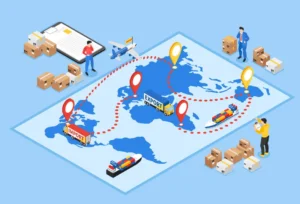Enterprises today are part of a new world: a software-driven world. And while this new world has brought many great innovations, it is also forcing organizations in all industries to rethink their software development practices, to deliver new features and offerings faster. Those entities that will embrace and incorporate change most effectively, will be the winners. In a world where industry disruptors set new market conditions, new standards for product delivery and customer satisfaction, industry incumbents are faced with two options: either continue using their existing approaches and tools, with the risk of lagging behind the competition, or adapt to the “new normal” and deliver products and applications faster, with less resources.
As it pertains to the “new normal” DevOps standards, organizations now face many challenges such as cost overruns, software development projects that don’t scale in line with the enterprise growth, and increased market demands for speed. On top of that, the available outdated testing tools don’t offer visibility to ensure the right specifications get tested in the right time.
Lean and agile principles
So, how can you make sure your organization is ready to manage unexpected changes, and deal with any dependencies that you already have under the hood? How do you ensure a strong balance between the existing business and the new development? Many of you may already be familiar with lean and agile principles and have probably even tried applying them in smaller teams. But what we’ve seen so far in the market is that many of you struggle to apply these principles across the entire organization.
Lean and agile principles can help you reach your goals in today’s hyper-competitive world of digital product delivery. By becoming a lean and agile enterprise your organization will be able to adapt faster to the needs of the market by improving internal collaboration and communication. You will be able to learn in real-time from your clients to ensure that you are producing the prioritized set of features that drive economic value. By managing test labs, test planning, and ensuring the tight linkage between product demand and delivery, your organization will be able to reduce waste (time, effort, resources), while ensuring that your business strategy is aligned with the investment and development goals.
Client successes
Let’s have a look at a few examples of what some of the industry leaders have achieved, using lean and agile processes.
- 50 percent reduction in time to market because of increased efficiency.
- 80 percent reduction and software defects through earlier testing and easier detection of discrepancies.
- 50 percent decrease in user time to acceptance of software releases.
- 57 percent development cost reduction.
Nationwide achieved 50 percent improvement in code quality and 70 percent reduction in system downtime by applying lean principles to transform the software delivery lifecycle. Diagnostic Grifols, a world-leading healthcare enterprise headquartered in Barcelona Spain, increased the efficiency of development documentation by 30 percent—facilitating compliance, ensuring consistency of records across all product lines, and reducing operational costs.

Photo: Experience the benefits of collaboration and agile development
Time to transform
It’s time to transform your organization into a lean and agile enterprise. It’s time to ensure that your firm can adjust to any market change, predict the unpredictable, keep costs low, deliver new features and offerings faster, and never lose a beat with your customers.
If you would like to learn more, let’s get connected! Our IBM solution enables companies to improve visibility and transparency across the product delivery lifecycle by providing a single source of truth. It also enables enterprises to define a process custom to each organization, and it ensures quality and compliance. All using lean and agile processes.





